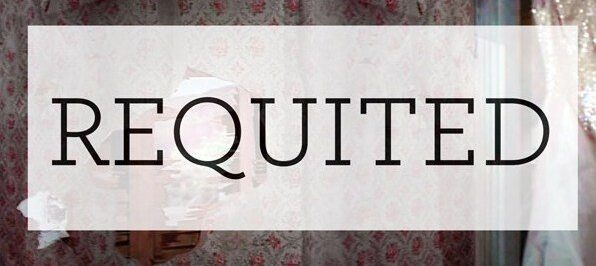Jasper Johns believed in gray: “Black and white is very leading. It tells you what to say or do. The gray encaustic paintings seem to me to allow the literal quality of the painting to predominate over any of the others.” It would be easy if the world were black and white. Sadly, it is not. Agnes Martin knew this. Jasper Johns knew this. This is something we all know.
Agnes Martin painted Untitled #12 in 1977. A gray plane delineated by a grid of rectangles. Gesso and graphite on canvas. A rectangular graph. From the entrance of the gallery it looks flat, as if the gray were solid. But up close beneath the hot lights, the graphite reveals itself, shining and opalescent.
Graphite. Concrete. Fog. Like looking into Lake Michigan on a dismal winter day in Chicago, where I now live. Like the sky of Bellingham, where I was once from. But when she painted this, Agnes Martin lived in the desert.
Untitled #12 requires me to provide something of myself, to bring my own content. It absorbs the chatter. Untitled #12 is straight, even stitches imposing order, while I am frayed, a hem come undone. It strips away the unnecessary and requires an investment of time. Not just thirty seconds. But a long time of looking.
I have stood in front of this painting many times, sometimes for as a long as a half an hour. It is an exercise I do sometimes, a meditation really. The first five minutes are hard. The second five minutes, painful. There are stools available to viewers at the museum, but in my opinion this is cheating. Better to feel the discomfort of standing still. It keeps one sharp. After about ten minutes, I submit. My mind clears. My pulse slows. It is an injury of my own doing. I doubt Martin intended this outcome.
Minimalism is a balm for the wound of modern life, an analgesic for the anxiety of inundation. Agnes Martin did not consider herself a minimalist, but instead an abstract expressionist. To me this seems impossible, obstinate even. Agnes Martin thought of her work as spiritual. Like Rothko, maybe. A connection to that which is larger than ourselves. Perhaps this comes from her laying-on of hands.
Sometimes I imagine her alone in the studio. She stands in front of the canvas rubbing graphite into gesso. It is hot in the desert. She is wearing a soiled men’s undershirt. She is sweating. Her hands are filthy. There is a gray smudge on her forehead. This image could be wrong.
“Covered in grayness, Bellingham looks the same.”
Agnes Martin and I both lived in Bellingham, Washington. We went to the same college, though many years apart. I did not know this until last week. She was never mentioned in the alumni newsletter, or maybe I just missed it. It would have been easy to go my whole life without knowing Agnes Martin, but then where would I be?
Though seldom discussed as a regional painter, when she is associated with a region it is the Southwest, a place where she clearly felt a deep connection. The description of Untitled #12 says the work “reflects the quiet landscapes and desert tonalities of her New Mexican surroundings.” But I look at this painting and see a monochromatic sky reflecting in the Puget Sound, or occasionally the dreary concrete of downtown Chicago reflected in the tinted windows of an office high rise.
Sometimes it is difficult to live in a city: loud, busy, crowded, distracting. It would be easy to imagine city dwellers taking refuge in the pastoral. But somehow this is not true. Minimalist aesthetics thrive in an urban landscape. The pastoral prods us to move outside of our built environment. Minimalism asks us to turn inward, just as gray does.
I like to think it is our common landscape of the Pacific Northwest that makes Untitled #12 speak to me in ways other, more famous, maybe even more adept paintings don’t. Our common link to grayness that forms the warp and woof of who we both became. Agnes Martin stands in her studio in the desert and paints the color of home. I stand in a museum in Chicago and see this home we both share.
Sources:
Johns, Jasper. Gray. Chicago, Il: The Art Institute of Chicago, 2007.
Martin, Agnes. Untitled #12. 1977. Art Institute of Chicago, Chicago, Il.
—. Writings. Ostfildern, Germany: Hatje Cantz Publishers, 2005.
“Untitled #12 :About this Artwork.” Art Institute of Chicago. Web. 20 Aug. 2009 <http://www.artic.edu/aic/collections/artwork/89403>.
Your Heart Breaks. “New York Part Two.” Your Heart Breaks. CD 2001.
Terri Griffith’s writing has appeared in Bloom, Suspect Thoughts, Bust, and in the anthologies Without a Net: The Female Experience of Growing Up Working Class and Are We Feeling Better Yet? Women Speak about Health Care in America. She is the literary correspondent for the popular contemporary art podcast Bad at Sports and co-hosts the online reading series The Parlor. Her novel So Much Better is published this winter by Green Lantern Press.
